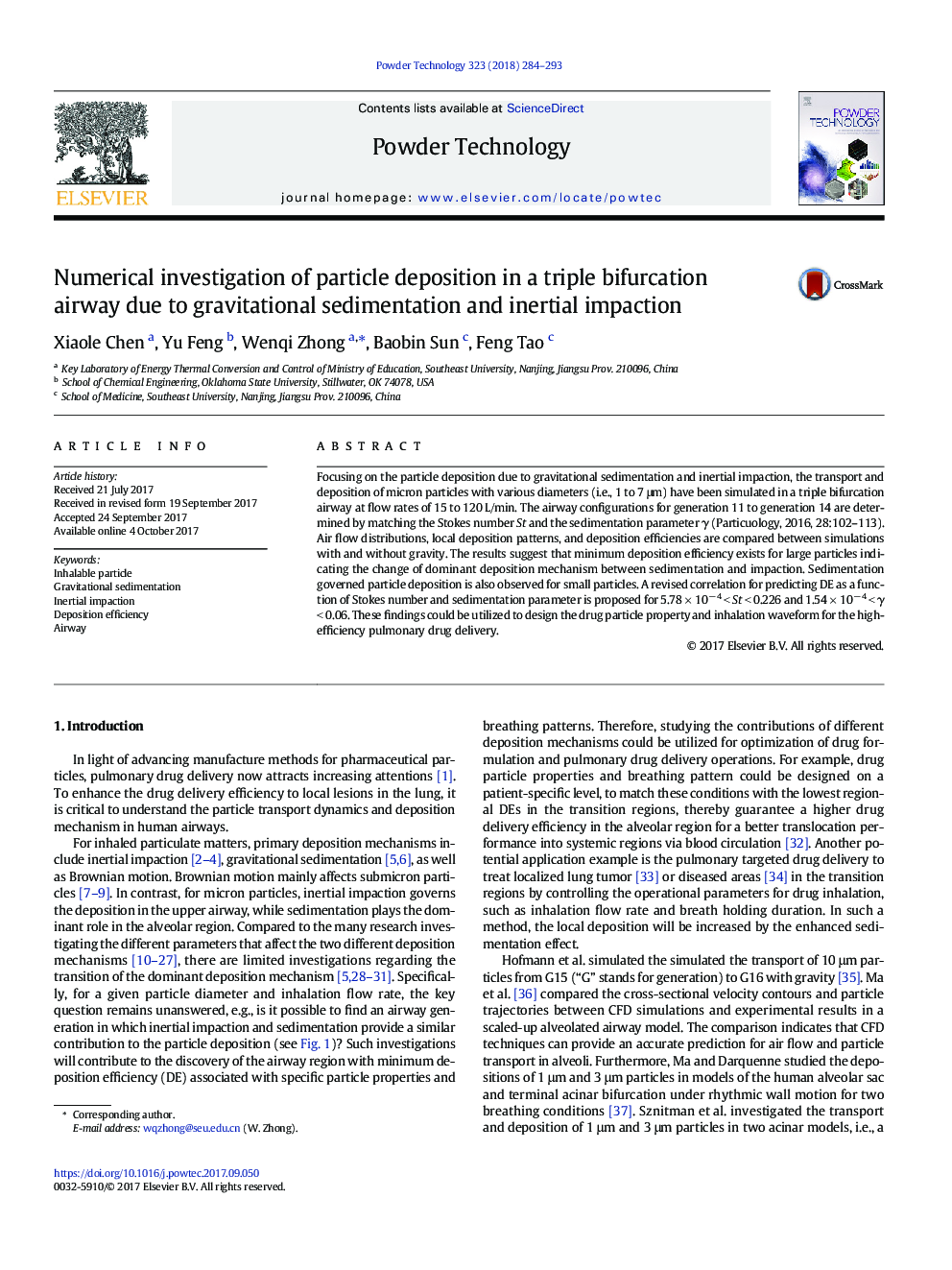| Article ID | Journal | Published Year | Pages | File Type |
|---|---|---|---|---|
| 4914774 | Powder Technology | 2018 | 10 Pages |
â¢Particle transport and deposition have been simulated in a G11-G14 human airway.â¢Simulations focused on the particle deposition due to sedimentation and impaction.â¢Minimum deposition efficiency exists for large particles.â¢Sedimentation governed particle deposition is observed for small particles.â¢A revised correlation for predicting DE is proposed.
Focusing on the particle deposition due to gravitational sedimentation and inertial impaction, the transport and deposition of micron particles with various diameters (i.e., 1 to 7 μm) have been simulated in a triple bifurcation airway at flow rates of 15 to 120 L/min. The airway configurations for generation 11 to generation 14 are determined by matching the Stokes number St and the sedimentation parameter γ (Particuology, 2016, 28:102-113). Air flow distributions, local deposition patterns, and deposition efficiencies are compared between simulations with and without gravity. The results suggest that minimum deposition efficiency exists for large particles indicating the change of dominant deposition mechanism between sedimentation and impaction. Sedimentation governed particle deposition is also observed for small particles. A revised correlation for predicting DE as a function of Stokes number and sedimentation parameter is proposed for 5.78 Ã 10â 4 < St < 0.226 and 1.54 Ã 10â 4 < γ < 0.06. These findings could be utilized to design the drug particle property and inhalation waveform for the high-efficiency pulmonary drug delivery.
Graphical abstractDownload high-res image (133KB)Download full-size image
